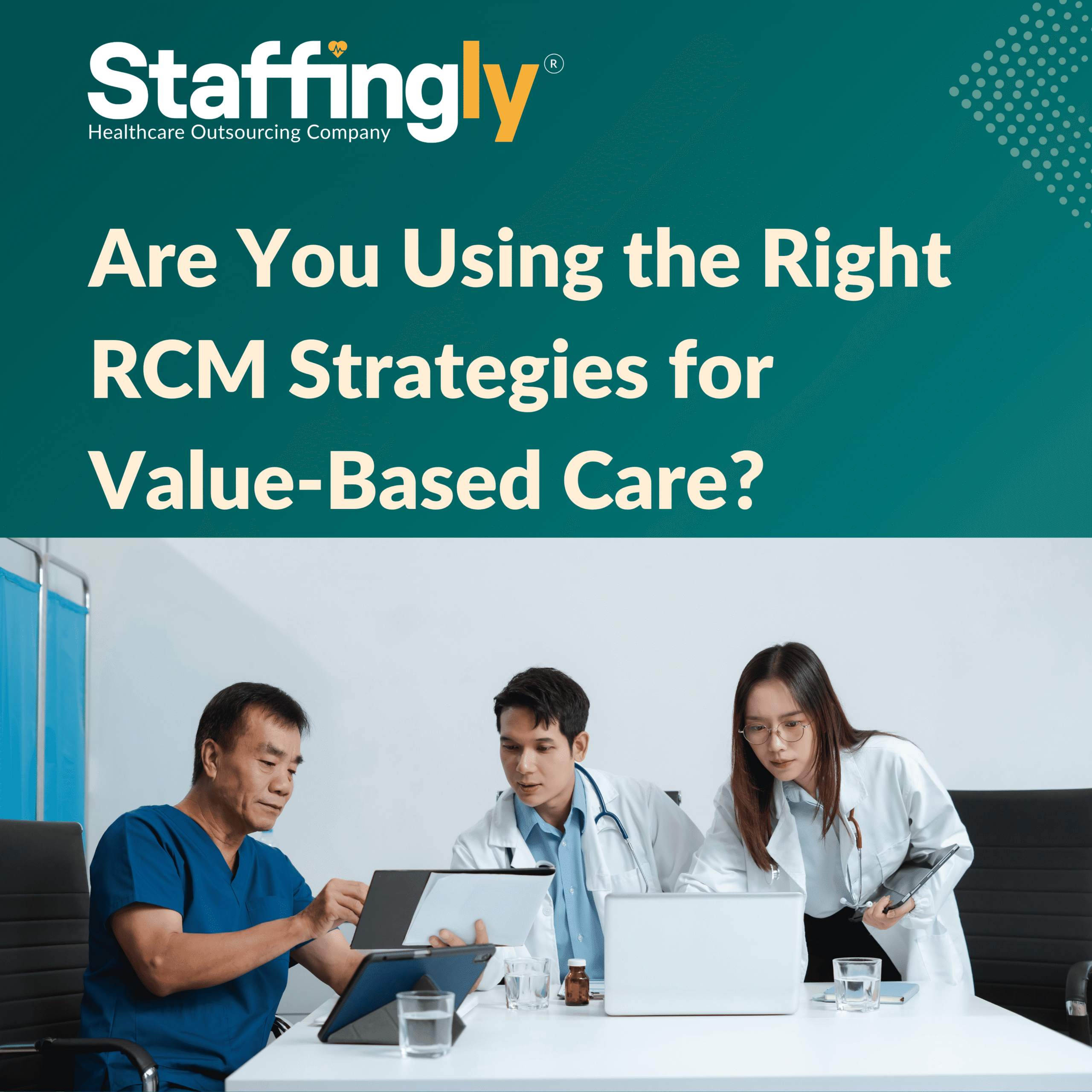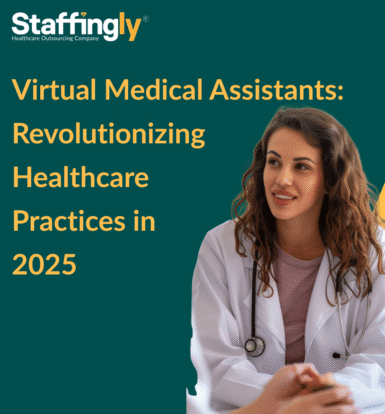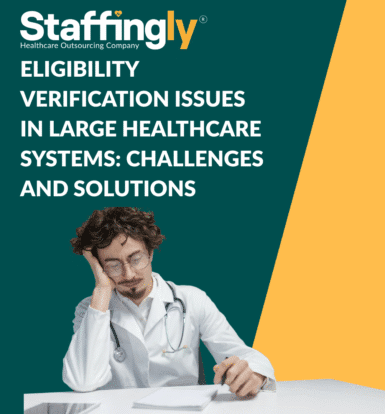On-Demand Outsourcing BPO Services for Healthcare Providers With 24/7 Coverage!
Save up to 70% on staffing costs!
Browse Specialty Staffing Services
Are You Using the Right RCM Strategies for Value-Based Care?
Dr. Nguyen had always run a tight ship. Her clinic was efficient, her billers sharp, and her patients loyal. But everything changed when the new payer contract arrived: “Reimbursements tied to quality outcomes. Bonus payments for reducing ER visits. Financial penalties for poor care coordination.” Her once-reliable fee-for-service model was now part of a value-based care (VBC) contract—and she wasn’t sure if her revenue cycle team was ready. Claims couldn’t just be coded and submitted anymore. Every dollar was now

Why Are U.S. Healthcare Providers Still Struggling With Admin Overload?
The waiting room is empty. The last patient left 45 minutes ago, but in the back office, the day is far from over. A provider scrolls through charts, flags lab results, and responds to Digital Health insurance requests all while staring at an inbox that continues to grow. “Just one more form,” they mutter, but one turns into five, and five becomes an hour. Dinner is missed, exhaustion sets in, and the cycle repeats the next day. This isn’t just

Virtual Medical Assistants: Revolutionizing Healthcare Practices in 2025
Opening Scene: A Clinic Without Administrative OverloadDr. Evans walks into the examination room where Mrs. Thompson, a retired nurse, waits. They engage in a thoughtful conversation about her recent health changes and concerns. As they talk, something is remarkably different today—Dr. Evans is entirely focused on the conversation, no typing, no computer screen between them. In the background, a Virtual Medical Assistant (VMA) is listening, recording, and managing the documentation in real-time. After the consultation, the VMA handles the scheduling

Is Your Medical Billing System Secure Enough to Protect Patient Data?
It started like any other Tuesday at Dr. Lawson’s family clinic until the front desk noticed something was off. Claims weren’t going out. The billing dashboard froze. Then, a chilling pop-up appeared: “Your files have been encrypted. Pay $45,000 to regain access.” A ransomware attack had taken down their entire billing operation. For nearly 36 hours, the clinic couldn’t verify insurance, submit claims, or follow up on reimbursements. Patients were rescheduled. Income halted. And the worst part? The attackers had

Transitioning from Manual to Automated RCM Systems: A Game-Changer for Healthcare Organizations
The healthcare industry is witnessing a significant transformation, with revenue cycle management (RCM) systems leading the charge. Traditionally, manual RCM systems have been the norm, involving tedious paperwork, time-consuming data entry, and a high risk of human error. However, as technology continues to advance, more healthcare providers are making the shift to automated RCM systems. This transition is not just a trend but a critical move to enhance efficiency, reduce errors, and streamline billing processes. Key Takeaways: Moving from manual

How to Use KPI Dashboards to Detect RCM Inefficiencies?
Revenue Cycle Management (RCM) is the backbone of financial health in healthcare organizations. But with increasing complexities in billing, coding, insurance verification, and collections, inefficiencies can creep in unnoticed. That’s where KPI dashboards become invaluable. They turn raw data into actionable insights, helping leaders quickly identify where the revenue cycle is leaking money or time. In this article, we’ll explore how KPI dashboards work, which metrics matter most, and how to use them to improve your RCM performance. Key Takeaways

How Prior Authorization Support Reduces Delays and Denials in Healthcare?
At a busy outpatient clinic, a patient needed a routine medication. The provider wrote the prescription, confident it would be filled the same day. But when the patient returned a week later, they still hadn’t received a single dose. “The pharmacy said my insurance won’t cover it without prior auth,” the patient explained. What should have been a straightforward decision turned into a frustrating administrative loop calls, forms, and endless back-and-forth on portals. Clinical staff spent hours collecting documentation and

Eligibility Verification Issues in Large Healthcare Systems: Challenges and Solutions
In today’s complex healthcare environment, eligibility verification is a crucial step in the revenue cycle management process. It ensures that a patient’s insurance information is accurate and active before services are rendered. However, in large healthcare systems where thousands of patients interact with multiple departments and billing units eligibility verification often becomes a major bottleneck, leading to claim denials, delayed reimbursements, and patient dissatisfaction. Key Takeaways: Eligibility verification errors are a leading cause of claim denials. Larger systems face data
 Book a Demo to Build Your Team Today!
Book a Demo to Build Your Team Today!


 Read Case Studies
Read Case Studies 


 Virtual Medical Assistants
Virtual Medical Assistants



